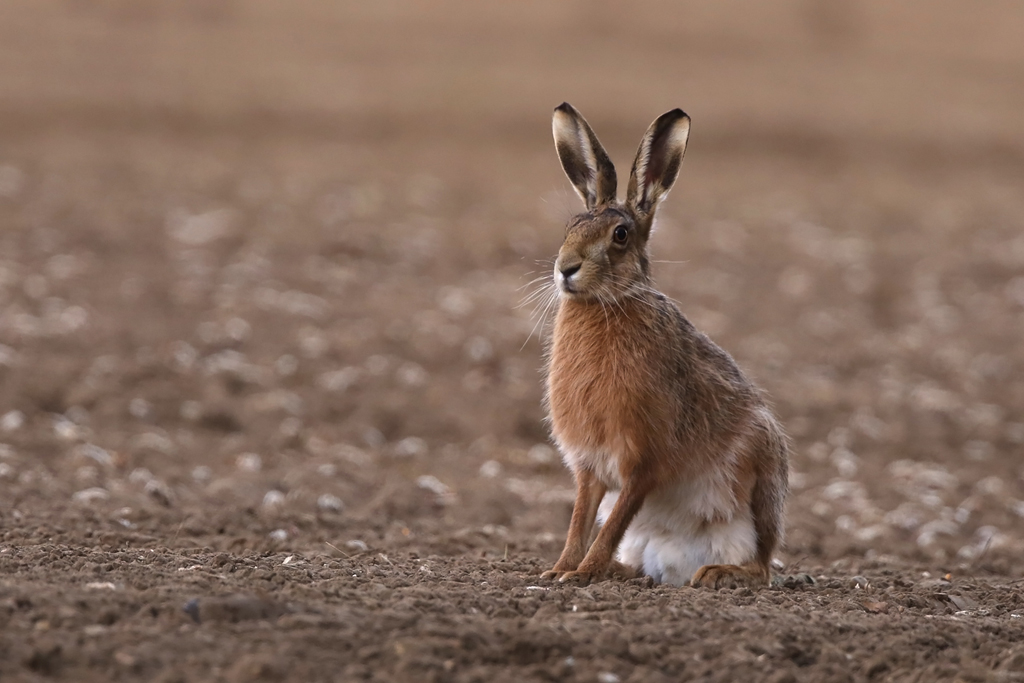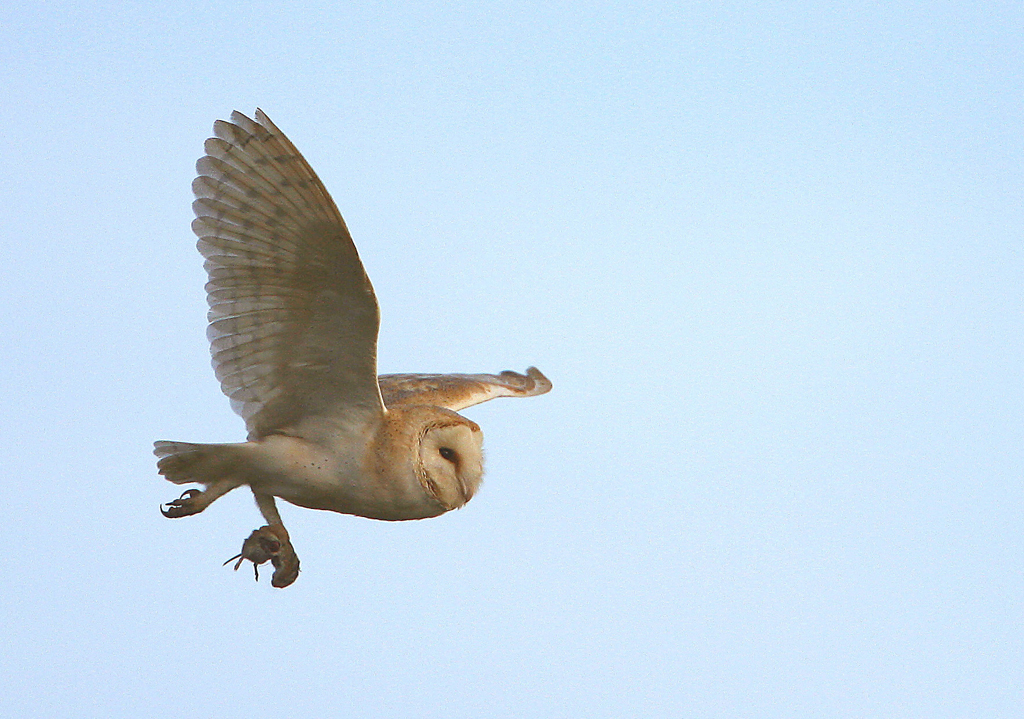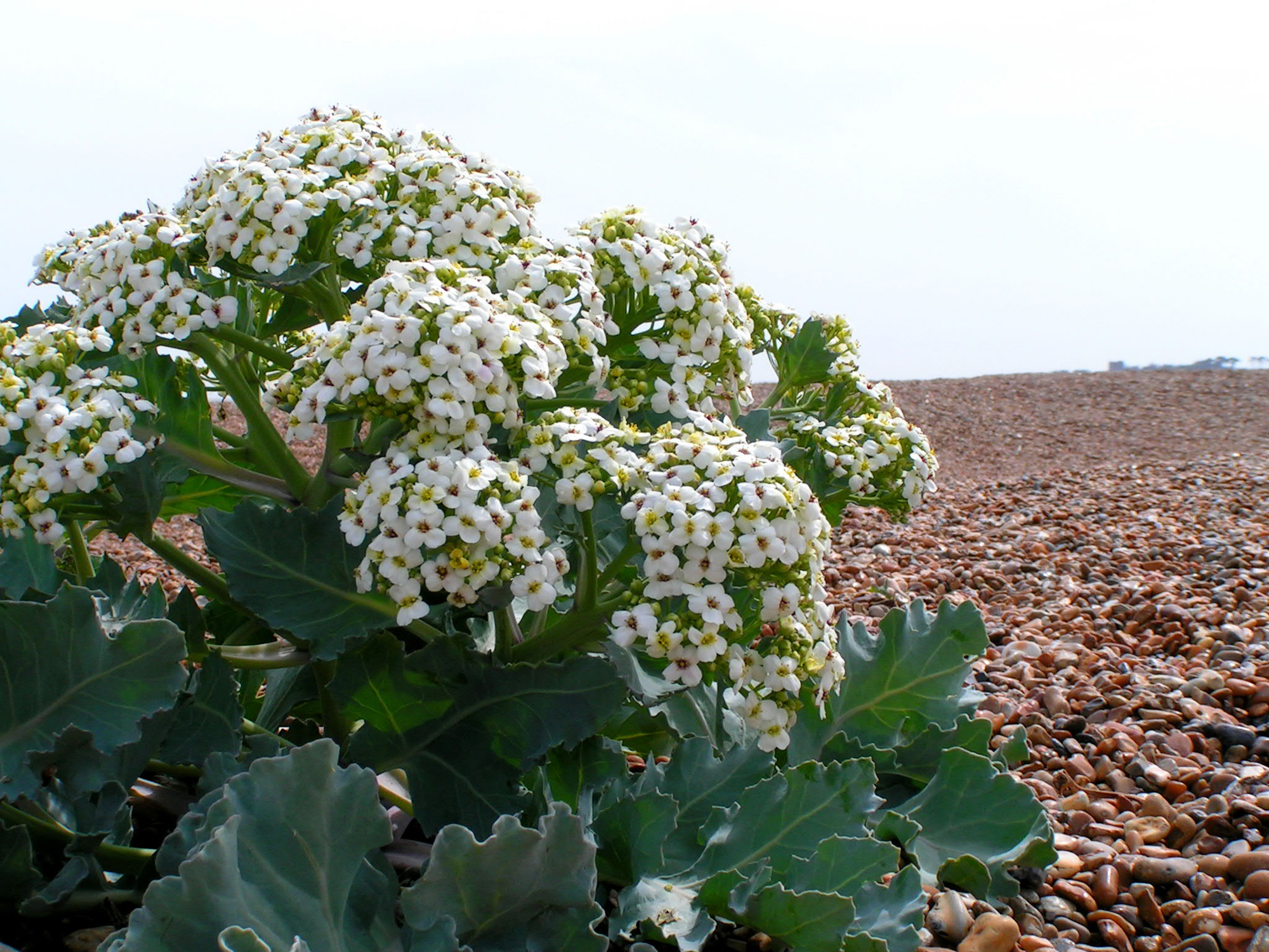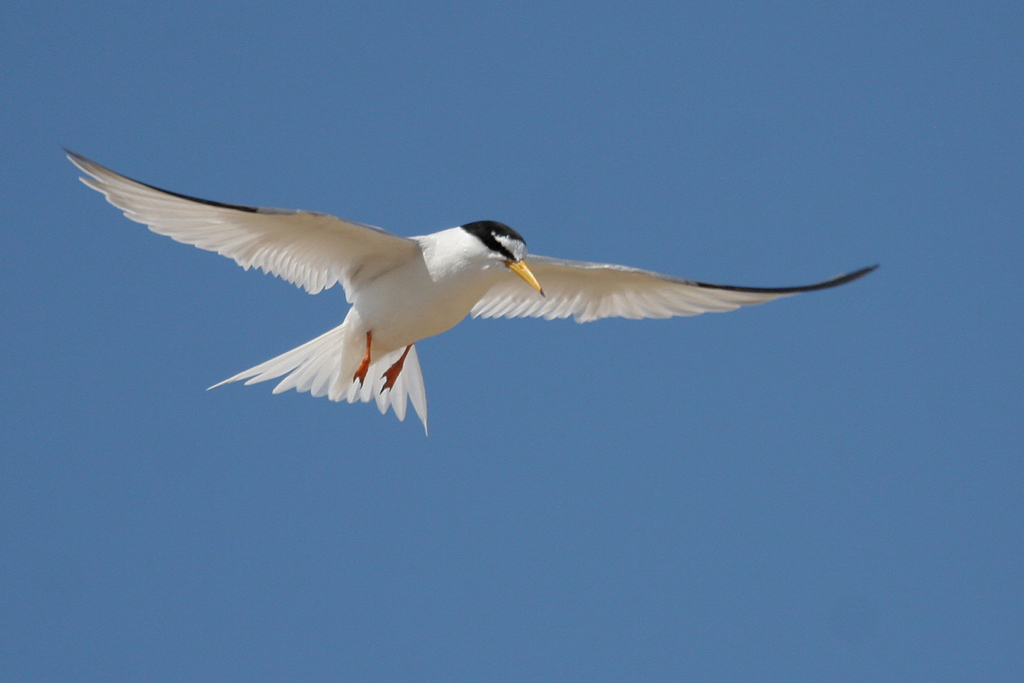Shingle Street is an exacting place for its flora, especially plants of the shingle, saltmarsh and ultra-arid concrete. They are all superbly adapted to their hard life, from plants with taproots that probe metres-deep into the shingle in search of water, to species daily submerged by the tides, and tiny, rare clovers flourishing in compacted soil that are grazed by rabbits right down to the ground. They are all specialists in their own way: finding them, photographing and recording them in 2015 helps create an important benchmark.
Laurie and Jonathan Forsyth
Description of principle flora habitats
Unstable shingle
Steep, sliding shingle close to the sea, backed by a series of storm-made ridges divided by intervening furrows. The ages of the storm ridges increase progressively with distance from the sea, with each ridge older than its predecessor. The first pioneer plants – usually Orache sp – are found on the youngest ridges. In a stormy winter, this habitat may be entirely washed away, only to re-form again.
Vegetated shingle
Loose shingle on a succession of storm ridges with intervening furrows, often with a marked variation in the sizes of stones on top of the ridges, compared with the stones in furrows on either side. Sea kale Crambe maritima is particularly abundant in this habitat, as is sea pea Lathyrus japonicus, which is usually confined to the crests of the storm ridges, with yellow-horned poppy Glaucium flavum and curled dock Rumex crispus. A thin sward of false oatgrass Arrhenatherum elatius covers extensive areas of this habitat.
Bare, fixed shingle Shingle at the farthest point from the sea was deposited long ago, and may not have been disturbed for decades. Successive generations of moss and other low plants have become established, only to eventually die and decompose into thin soil that acts as a matrix around the stones, making them progressively more stable and suitable for further colonisation by more plants and moss. Where bare stone remains exposed it is often colonised by a variety of orange or black lichens and Cladonia lichens sp. Sea campion Silene maritima and several stonecrops Sedum sp are also found here.
Grassed shingle
On the seaward side of the cottages and more noticeably on the landward side, areas of shingle are immobile and almost invisible in many places, being covered with a dense sward of low flora-rich grasses. In areas where rabbit grazing has created a low sward and patches of disturbance through scuffling and burrowing, several rare or local species grow, including yellow vetch Vicia lutea, and the small clovers T. suffocatum, T.glomeratum and T. striatum. Bur medick Medicago minima is often found with these species. Taller species that flourish in this habitat include viper’s bugloss Echium vulgare, weld Reseda luteola, hoary mullein Verbascum pulverulentum, and valerian Centranthus rubra.
Vegetated seawall
Serpentine earth walls twist and turn, following both sides of the old course of the drained Barthorpe’s Creek. They are heavily vegetated by a small number of very dominant species, including false oatgrass, cocksfoot Dactylis glomerata,Yorkshire fog Holcus lanatus, hemlock Conium maculatum, stinging nettle Urtica dioica, prickly sowthistle Sonchus asper and creeping thistle Cirsium arvense.
Concrete
Although man-made, the arid surfaces of concrete roads are important features for lichens, stonecrops and other small plants. Cracked, broken areas of concrete and masonry are a good habitat for small species such as early forget me not Myosotis ramosissima, sticky mouse ear Cerastium glomerata, procumbent pearlwort Sagina procumbens, common whitlow grass Erophila verna and early hairgrass Aira praecox
Saltmarsh
Saltmarsh has formed where the shingle deflects waves or strong currents, allowing silt and mud to accumulate in calm, shallow water, such as either side of Barthorpe’s Creek. Eventually, when the accumulating material is deep enough, and raised high enough to be exposed for long periods between tides, it will be colonised by a succession of plant species. This usually begins with species of glasswort or samphire Salicornia sp. Daily tides submerge some areas of the saltmarsh for longer than others. Because of this and also because some plant species have a greater salt tolerance than others, different zones of salt-tolerant vegetation become established, ranging from glasswort at the lowest point, to sea wormwood Artemisia maritima and shrubby seablite Sueda vera at the highest point, which is often at the foot of the seawall. The bulk of vegetation in the ‘middle marsh’ usually consists of sea purslane, Atriplex portucaloides, sea lavender Limonium vulgare, and saltmarsh grasses.
| SHINGLE STREET FLORA SURVEY 2015 | Recording dates |
| Recorders: Laurie Forsyth & Jonathan Forsyth | |
| 8.5.2015 | |
| 12.5.2015 | |
| 19.5.2015 | |
| 26.6.2015 | |
| 14.7.2015 | |
| 23.7.2015 | |
| 5.8.2015 | |
| Grid:TM 364432 Grass seawall | This composite |
| Grid:TM 362427 Grass seawall | species list is based |
| Grid:TM 365437 Grass seawall and scrub | on walking |
| Grid:TM 369439 Grass seawall | the listed grid points. |
| Grid:TM 369428 vegetated shingle | Many species are |
| Grid:TM 369430 Grassed shingle | found at several grid points, |
| Grid:TM 371439 Grass seawall | others in just one or two |
| Grid:TM 368422 Grass seawall and vegetated shingle | |
| Grid:TM 364424 Grass seawall, veg. Shingle, brackish pool | |
| Grid: TM 368440 Saltmarsh | |
| FLOWERING PLANTS | COMMON NAME |
| Achillea millefolium | Yarrow |
| Anthriscus caucalis | Bur chervil |
| Anthriscus sylvestris | Cow Parsley |
| Apium graveolens | Wild Celery |
| Apium nodiflorum | Fool’s Water-Cress |
| Arctium minus | Lesser Burdock |
| Armeria maritima | Thrift |
| Artemisia maritima | Sea wormwood |
| Artemisia vulgaris | Mugwort |
| Aster tripolium | Sea Aster |
| Atriplex portulacoides | Sea Purslane |
| Atriplex prostrata | Spear-Leaved Orache |
| Ballota nigra | Black Horehound |
| Bellis perennis | Daisy |
| Berula erecta | Lesser water parsnip |
| Beta vulgaris maritima | Sea Beet |
| Calendula officinalis | Pot Marigold |
| Calystegia sepium | Hedge bindweed |
| Carduus nutans | Musk Thistle |
| Centranthus ruber | Red Valerian |
| Cerastium fontanum | Common mouse ear |
| Cerastium glomeratum | Sticky Mouse-Ear |
| Chelidonium majus | Greater celandine |
| Cirsium arvense | Creeping Thistle |
| Cirsium vulgare | Spear Thistle |
| Claytonia perfoliata | Spring Beauty |
| Cochlearia anglica | English Scurvygrass |
| Cochlearia danica | Danish Scurvygrass |
| Conium maculatum | Hemlock |
| Convolvulus arvensis | Field Bindweed |
| Crambe maritima | Sea-Kale |
| Crepis capillaris | Smooth Hawk’s-Beard |
| Crepis vesicaria | Beaked Hawk’s-Beard |
| Crithmum maritimum | Rock Samphire |
| Daucus carota | Wild carrot |
| Digitalis purpurea | Foxglove |
| Dipsacus fullonum sens.lat. | Wild Teasel |
| Echium vulgare | Viper’s Bugloss |
| Epilobium angustifolium | Rosebay willowherb |
| Epilobium hirsutum | Great Willowherb |
| Equisetum arvense | Common horsetail |
| Erodium cicutarium agg | Common Stork’s-Bill |
| Erophila verna | Common Whitlowgrass |
| Galium aparine | Cleavers |
| Galium verum | Lady’s Bedstraw |
| Geranium dissectum | Cut-Leaved Crane’s-Bill |
| Geranium molle | Dove’s-Foot Crane’s-Bill |
| Geranium robertianum | Herb-Robert |
| Geranium rotundifolium | Round-Leaved Crane’s-Bill |
| Glaucium flavum | Yellow Horned Poppy |
| Glaux maritima | Sea-Milkwort |
| Glechoma hederacea | Ground-Ivy |
| Heracleum sphondylium | Hogweed |
| Honckenya peploides | Sea Sandwort |
| Hypochaeris radicata | Common catsear |
| Inula crithmoides | Golden samphire |
| Knautia arvensis | Field Scabious |
| Lactuca serriola | Prickly Lettuce |
| Lactuca virosa | Greater Lettuce |
| Lamium album | White Dead-Nettle |
| Lamium purpureum | Red Dead-Nettle |
| Lathyrus japonicus | Sea Pea |
| Lathyrus nissolia | Grass Vetchling |
| Lathyrus pratensis | Meadow vetchling |
| Lemna sp | Duckweed sp |
| Lepidium campestre | Field Pepperwort |
| Lepidium draba | Hoary Cress |
| Lepidium latifolium | Dittander |
| Leucanthemum vulgare | Oxeye Daisy |
| Limonium vulgare | Common Sea-Lavender |
| Linaria vulgaris | Common toadflax |
| Lotus corniculatus | Common Bird’s-Foot-Trefoil |
| Lotus glaber | Narrow-Leaved Bird’s-Foot-Trefoil |
| Lupinus arboreus | Tree Lupin |
| Malva sylvestris | Common Mallow |
| Matricaria discoidea | Pineapple weed |
| Medicago arabica | Spotted Medick |
| Medicago lupulina | Black Medick |
| Medicago minima | Bur Medick |
| Melilotus albus | White Melilot |
| Myosotis ramosissima | Early Forget-Me-Not |
| Nasturtium officinale | Water cress |
| Ophrys apifera | Bee Orchid |
| Ornithogalum angustifolium | Star-Of-Bethlehem |
| Papaver rhoeas | Common Poppy |
| Parietalia officinalis | Pellitory of the wall |
| Persicaria amphibia | Amphibious bistort |
| Picris echioides | Bristly Oxtongue |
| Pilosella officinarum | Mouse-Ear-Hawkweed |
| Plantago coronopus | Buck’s-Horn Plantain |
| Plantago lanceolata | Ribwort Plantain |
| Plantago major | Greater Plantain |
| Plantago maritima | Sea Plantain |
| Plantago media | Hoary Plantain |
| Potentilla anserina | Silverweed |
| Potentilla argentea | Hoary Cinquefoil |
| Potentilla reptans | Creeping Cinquefoil |
| Pteridium aquilinum | Bracken |
| Pulicaria dysenterica | Common fleabane |
| Ranunculus repens | Creeping Buttercup |
| Reseda luteola | Weld |
| Rumex acetosella | Sheep sorrel |
| Rumex conglomeratus | Clustered dock |
| Rumex crispus | Curled Dock |
| Rumex obtusifolius | Broad-Leaved Dock |
| Salicornia europaea agg. | Glasswort |
| Salvia verbenaca | Wild clary |
| Saxifraga granulata | Meadow Saxifrage |
| Sedum acre | Biting Stonecrop |
| Sedum anglicum | English Stonecrop |
| Senecio erucifolius | Hoary ragwort |
| Senecio inaequidens | Slender leaved ragwort |
| Senecio jacobaea | Common Ragwort |
| Senecio vulgaris | Groundsel |
| Seriphidium maritimum | Sea Wormwood |
| Silene dioica | Red Campion |
| Silene inaequidens | Slender leaved ragwort |
| Silene latifolia | White campion |
| Silene uniflora | Sea Campion |
| Sisymbrium officinale | Hedge Mustard |
| Smyrnium olusatrum | Alexanders |
| Sonchus arvensis | Perennial Sow-Thistle |
| Sonchus asper | Prickly Sow-Thistle |
| Sonchus oleraceus | Smooth Sow-Thistle |
| Spartina anglica | Common Cord-Grass |
| Spergularia marina | Lesser Sea-Spurrey |
| Stellaria media | Common Chickweed |
| Suaeda maritima | Annual Sea-Blite |
| Taraxacum officinale agg. | Dandelion |
| Torilis japonica | Upright hedge parsley |
| Torilis japonica | Upright hedge parsley |
| Tragopogon pratensis minor | Goat’s-Beard |
| Trifolium arvense | Hare’s-Foot Clover |
| Trifolium campestre | Hop Trefoil |
| Trifolium dubium | Lesser Trefoil |
| Trifolium glomeratum | Clustered Clover |
| Trifolium micranthum | Slender Trefoil |
| Trifolium pratense | Red Clover |
| Trifolium repens | White Clover |
| Trifolium scabrum | Rough Clover |
| Trifolium striatum | Knotted Clover |
| Trifolium suffocatum | Suffocated Clover |
| Triglochin maritimum | Sea Arrowgrass |
| Tripleurospermum maritimum agg. | Sea mayweed |
| Typha angustifolia | Lesser reedmace |
| Urtica dioica | Common Nettle |
| Valerianella locusta | Common Cornsalad |
| Verbascum thapsis | Great mullein |
| Verbascum pulverulentum | Hoary mullein |
| Veronica arvensis | Wall Speedwell |
| Veronica hederifolia hederifolia | Ivy-Leaved Speedwell |
| Vicia hirsuta | Hairy Tare |
| Vicia lathyroides | Spring Vetch |
| Vicia lutea | Yellow Vetch |
| Vicia sativa | Common Vetch |
| Vicia sativa nigra | Narrow-Leaved Vetch |
| TREES and SHRUBS | |
| Bryonia dioica | White bryony |
| Crataegus monogyna | Hawthorn |
| Cytisus scoparius | Broom |
| Prunus spinosa | Blackthorn |
| Pyrus sp | Pear sp |
| Rosa canina | Dog rose |
| Rubus sp | Blackberry sp |
| Ulex europaeus | Gorse |
| Vulpia myuros | |
| Ulmus sp | Elm sp |
| Roadside trees and shrubs | |
| Acer rubrum | Red maple |
| Alnus cordata | Italian alder |
| Alnus glutinosa | Alder |
| Crataegus monogyna | Hawthorn |
| Hedera helix | Ivy |
| Malus sp | Apple sp |
| Pinus nigra ssp laricio | Corsican pine |
| Prunus cerasifera | Black flowering cherry |
| Sambucus nigra | Elder |
| GRASSES | |
| Agropyron pungens | Sea couch |
| Alopecurus pratensis | Meadow Foxtail |
| Arrhenatherum elatius | False Oat-Grass |
| Aira caryophyllea | Silver Hair-Grass |
| Aira praecox | Early Hair-Grass |
| Anisantha sterilis | Barren Brome |
| Bromus hordeaceus | Soft-Brome |
| Cynosuros cristatus | Crested dogstail |
| Dactylis glomerata | Cocksfoot |
| Elymus repens | Couch |
| Festuca arundinaceae | Tall fescue |
| Holcus lanatus | Yorkshire-Fog |
| Hordeum murinum | Wall Barley |
| Hordeum secalinum | Meadow barley |
| Koeleria macrantha | Crested hair grass |
| Lolium perenne | Perennial Rye-Grass |
| Phleum pratense | Timothy |
| Phragmites australis | Common Reed |
| Phalaris arundinaceae | Reed canary grass |
| Poa annua | Annual meadow grass |
| Poa pratensis | Smooth Meadow-Grass |
| Poa trivialis | Rough meadow grass |
| Trisetum flavescens | Yellow Oat-Grass |
| Vulpia bromoides | Squirrel tail fescue |
| RUSHES and SEDGES | |
| Bolboschoenus maritimus | Sea clubrush |
| Carex otrubae | False fox sedge |
| Carex riparia | Greater pond sedge |
| Juncus effusus | Soft rush |
| Juncus gerardii | Saltmarsh rush |
| Juncus maritimus | Sea rush |








